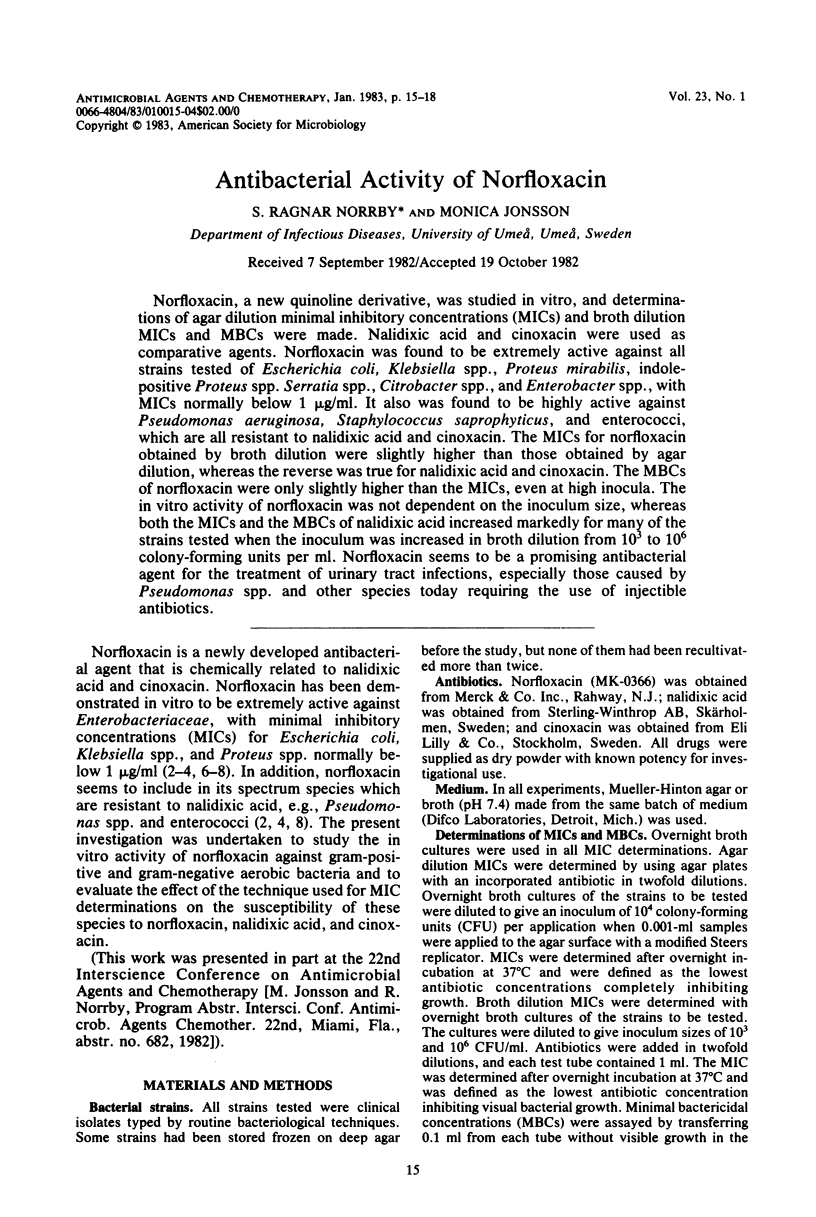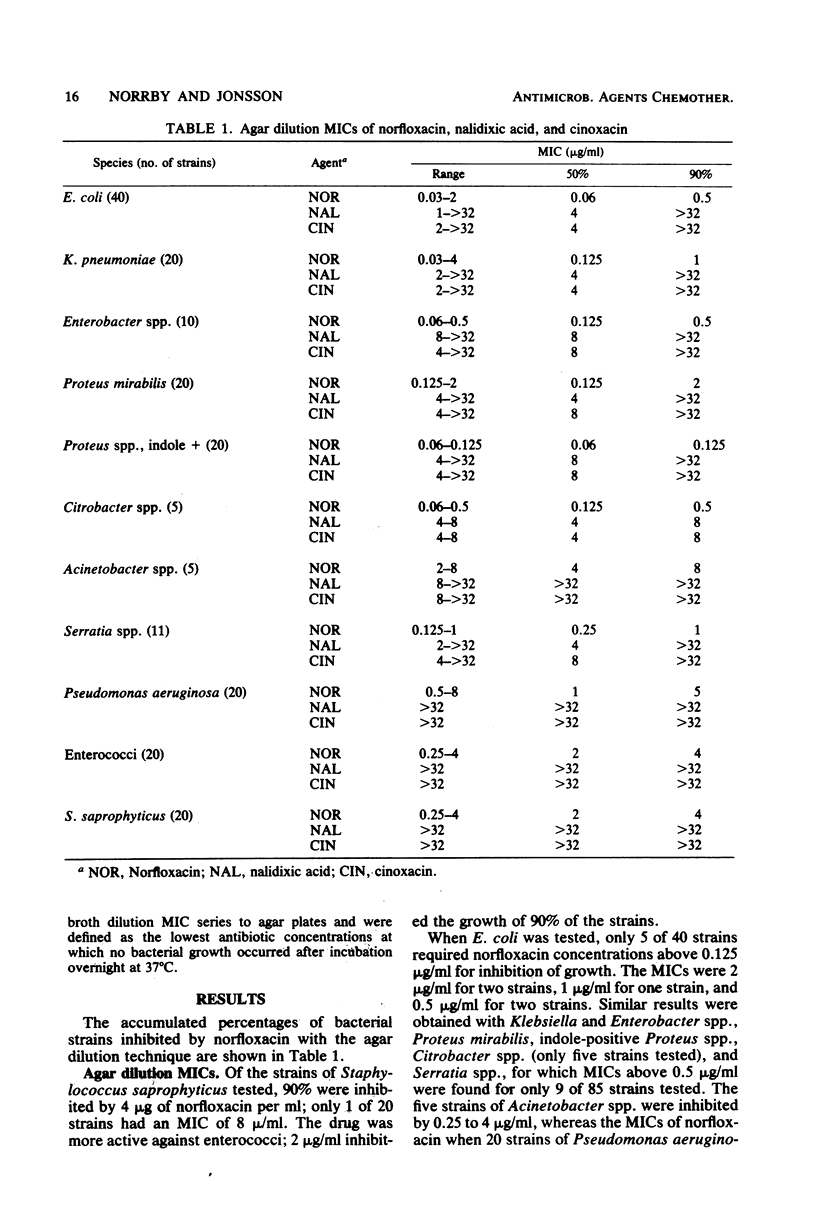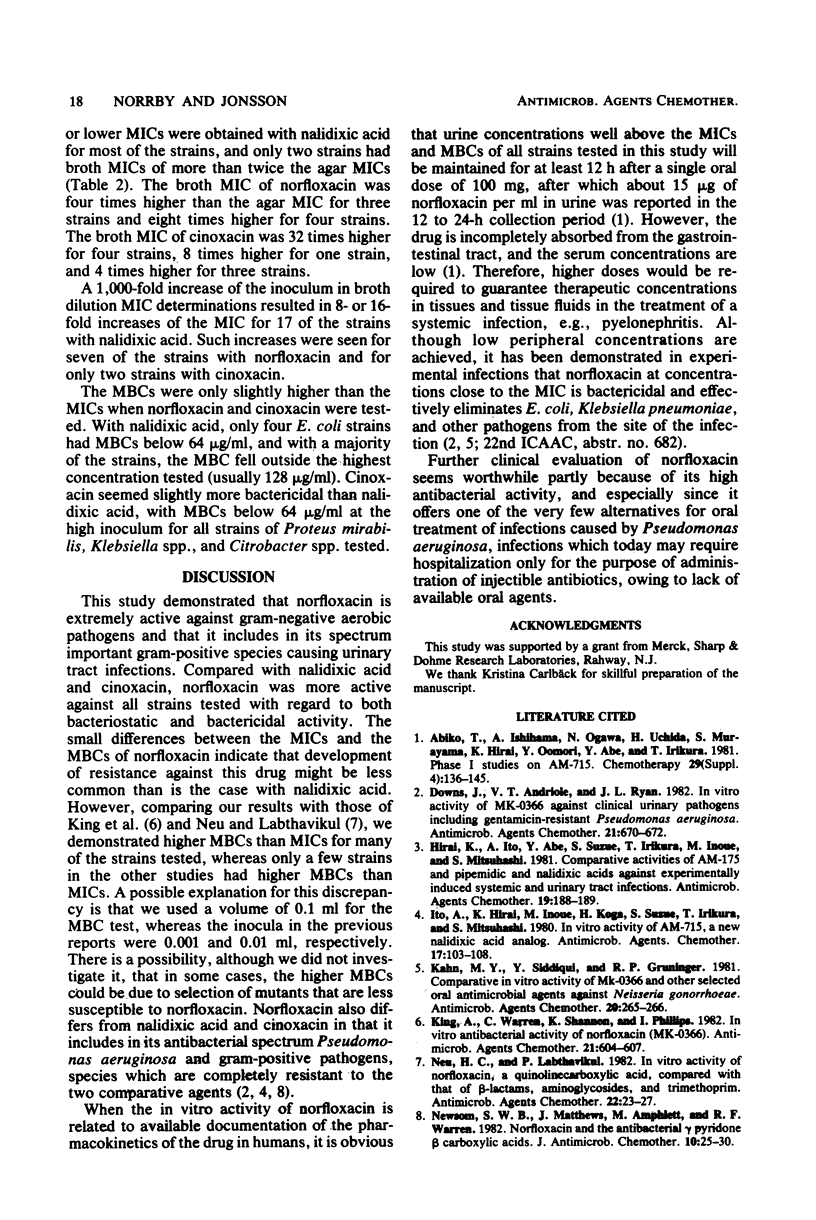Abstract
Norfloxacin, a new quinoline derivative, was studied in vitro, and determinations of agar dilution minimal inhibitory concentrations (MICs) and broth dilution MICs and MBCs were made. Nalidixic acid and cinoxacin were used as comparative agents. Norfloxacin was found to be extremely active against all strains tested of Escherichia coli, Klebsiella spp., Proteus mirabilis, indole-positive Proteus spp. Serratia spp., Citrobacter spp., and Enterobacter spp., with MICs normally below 1 microgram/ml. It also was found to be highly active against Pseudomonas aeruginosa, Staphylococcus saprophyticus, and enterococci, which are all resistant to nalidixic acid and cinoxacin. The MICs for norfloxacin obtained by broth dilution were slightly higher than those obtained by agar dilution, whereas the reverse was true for nalidixic acid and cinoxacin. The MBCs of norfloxacin were only slightly higher than the MICs, even at high inocula. The in vitro activity of norfloxacin was not dependent on the inoculum size, whereas both the MICs and the MBCs of nalidixic acid increased markedly for many of the strains tested when the inoculum was increased in broth dilution from 10(3) to 10(6) colony-forming units per ml. Norfloxacin seems to be a promising antibacterial agent for the treatment of urinary tract infections, especially those caused by Pseudomonas spp. and other species today requiring the use of injectable antibiotics.
Full text
PDF



Selected References
These references are in PubMed. This may not be the complete list of references from this article.
- Downs J., Andriole V. T., Ryan J. L. In vitro activity of MK-0366 against clinical urinary pathogens including gentamicin-resistant Pseudomonas aeruginosa. Antimicrob Agents Chemother. 1982 Apr;21(4):670–672. doi: 10.1128/aac.21.4.670. [DOI] [PMC free article] [PubMed] [Google Scholar]
- Hirai K., Ito A., Abe Y., Suzue S., Irikura T., Inoue M., Mitsuhashi S. Comparative activities of AM-715 and pipemidic and nalidixic acids against experimentally induced systemic and urinary tract infections. Antimicrob Agents Chemother. 1981 Jan;19(1):188–189. doi: 10.1128/aac.19.1.188. [DOI] [PMC free article] [PubMed] [Google Scholar]
- Ito A., Hirai K., Inoue M., Koga H., Suzue S., Irikura T., Mitsuhashi S. In vitro antibacterial activity of AM-715, a new nalidixic acid analog. Antimicrob Agents Chemother. 1980 Feb;17(2):103–108. doi: 10.1128/aac.17.2.103. [DOI] [PMC free article] [PubMed] [Google Scholar]
- Khan M. Y., Siddiqui Y., Gruninger R. P. Comparative in vitro activity of Mk-0366 and other selected oral antimicrobial agents against Neisseria gonorrhoeae. Antimicrob Agents Chemother. 1981 Aug;20(2):265–266. doi: 10.1128/aac.20.2.265. [DOI] [PMC free article] [PubMed] [Google Scholar]
- King A., Warren C., Shannon K., Phillips I. In vitro antibacterial activity of norfloxacin (MK-0366). Antimicrob Agents Chemother. 1982 Apr;21(4):604–607. doi: 10.1128/aac.21.4.604. [DOI] [PMC free article] [PubMed] [Google Scholar]
- Neu H. C., Labthavikul P. In vitro activity of norfloxacin, a quinolinecarboxylic acid, compared with that of beta-lactams, aminoglycosides, and trimethoprim. Antimicrob Agents Chemother. 1982 Jul;22(1):23–27. doi: 10.1128/aac.22.1.23. [DOI] [PMC free article] [PubMed] [Google Scholar]
- Newsom S. W., Matthews J., Amphlett M., Warren R. E. Norfloxacin and the antibacterial gamma pyridone beta carboxylic acids. J Antimicrob Chemother. 1982 Jul;10(1):25–30. doi: 10.1093/jac/10.1.25. [DOI] [PubMed] [Google Scholar]


